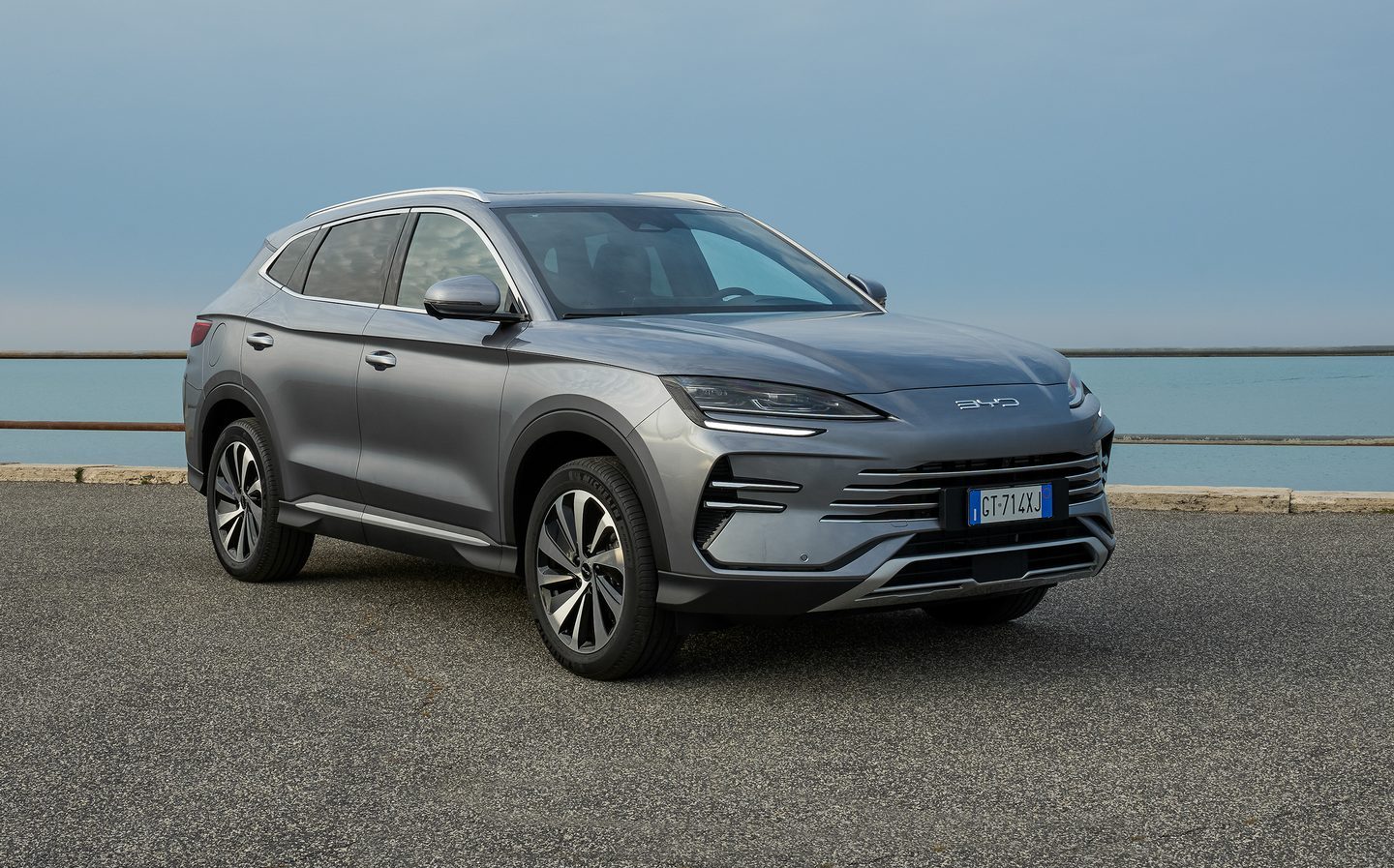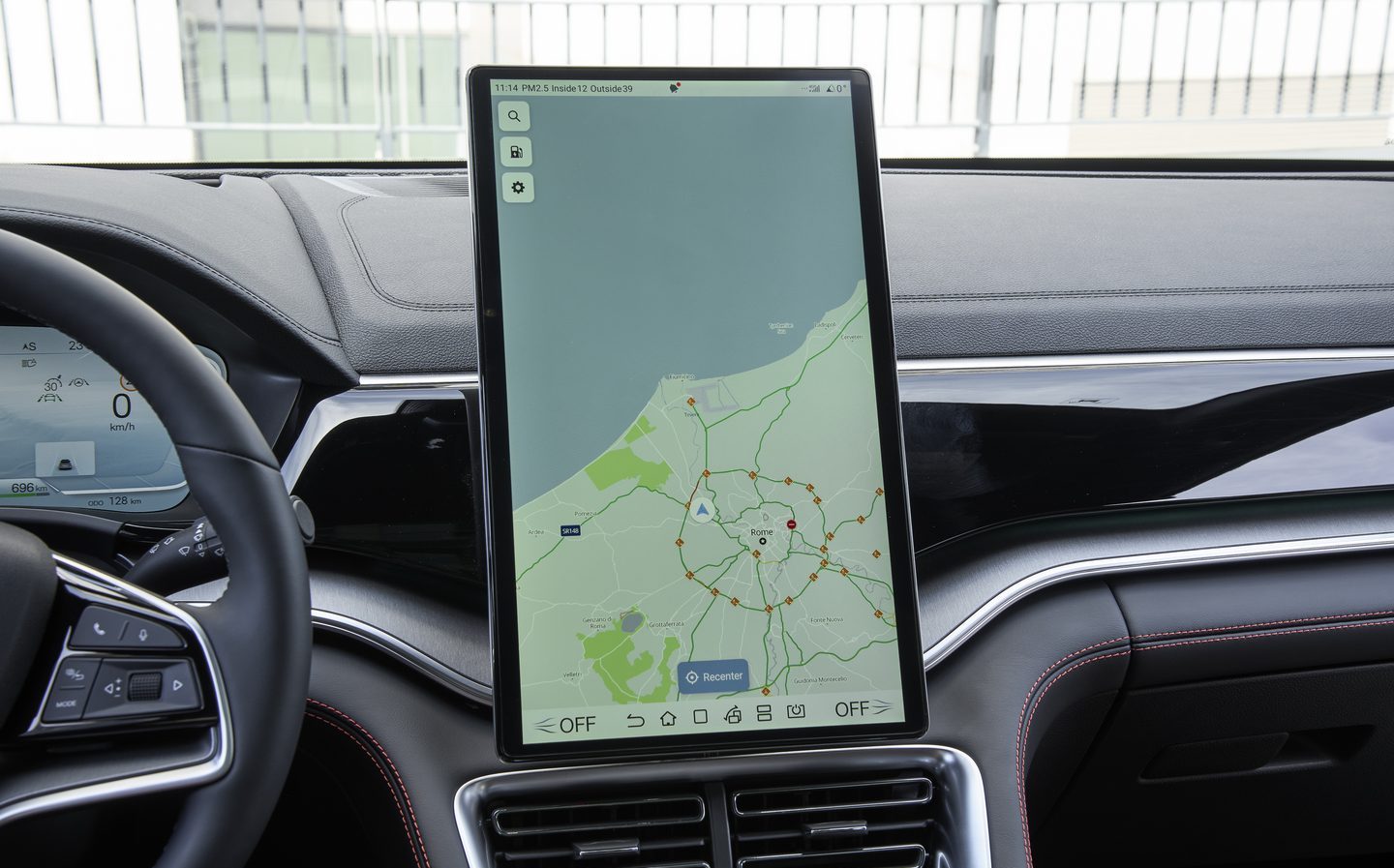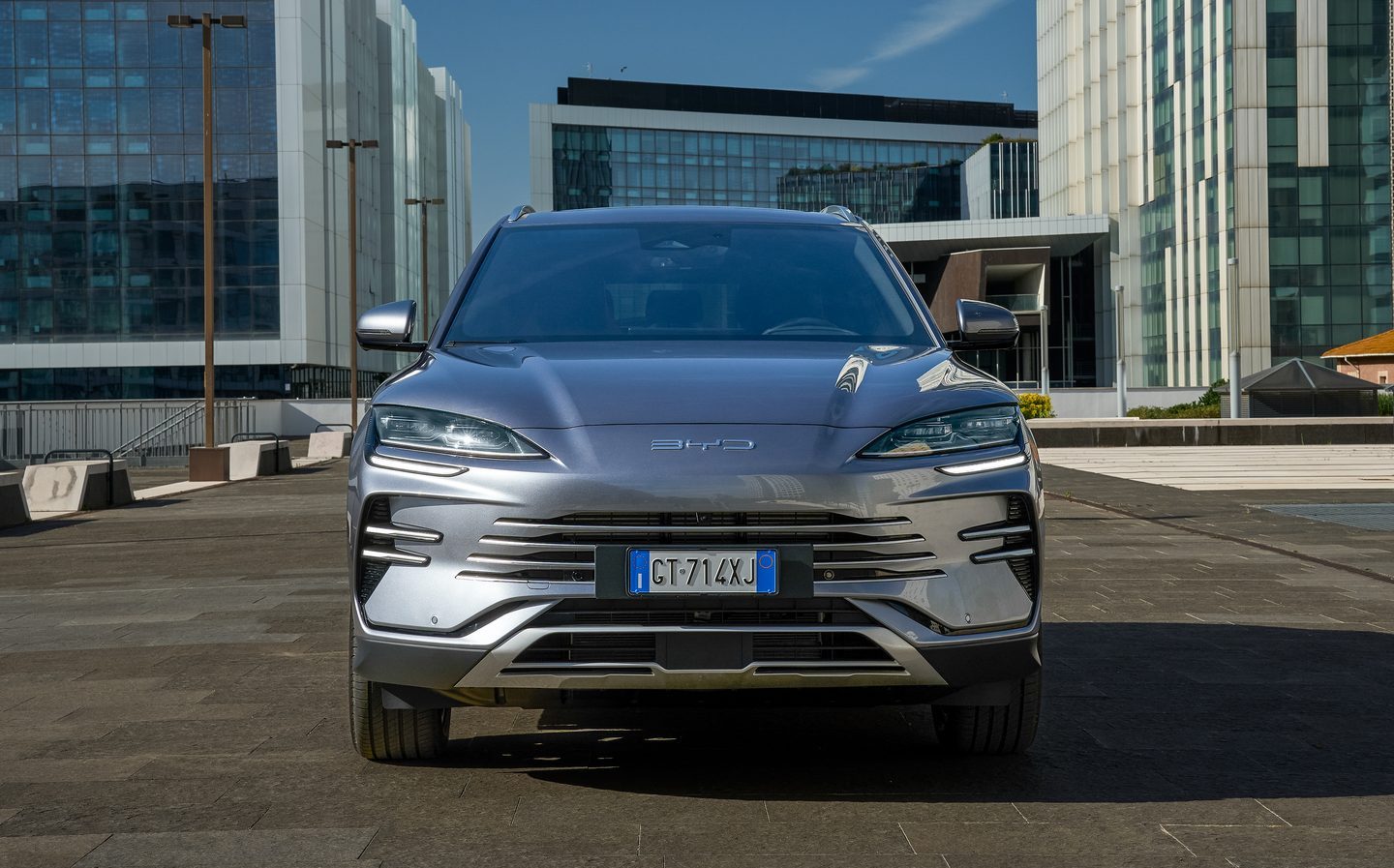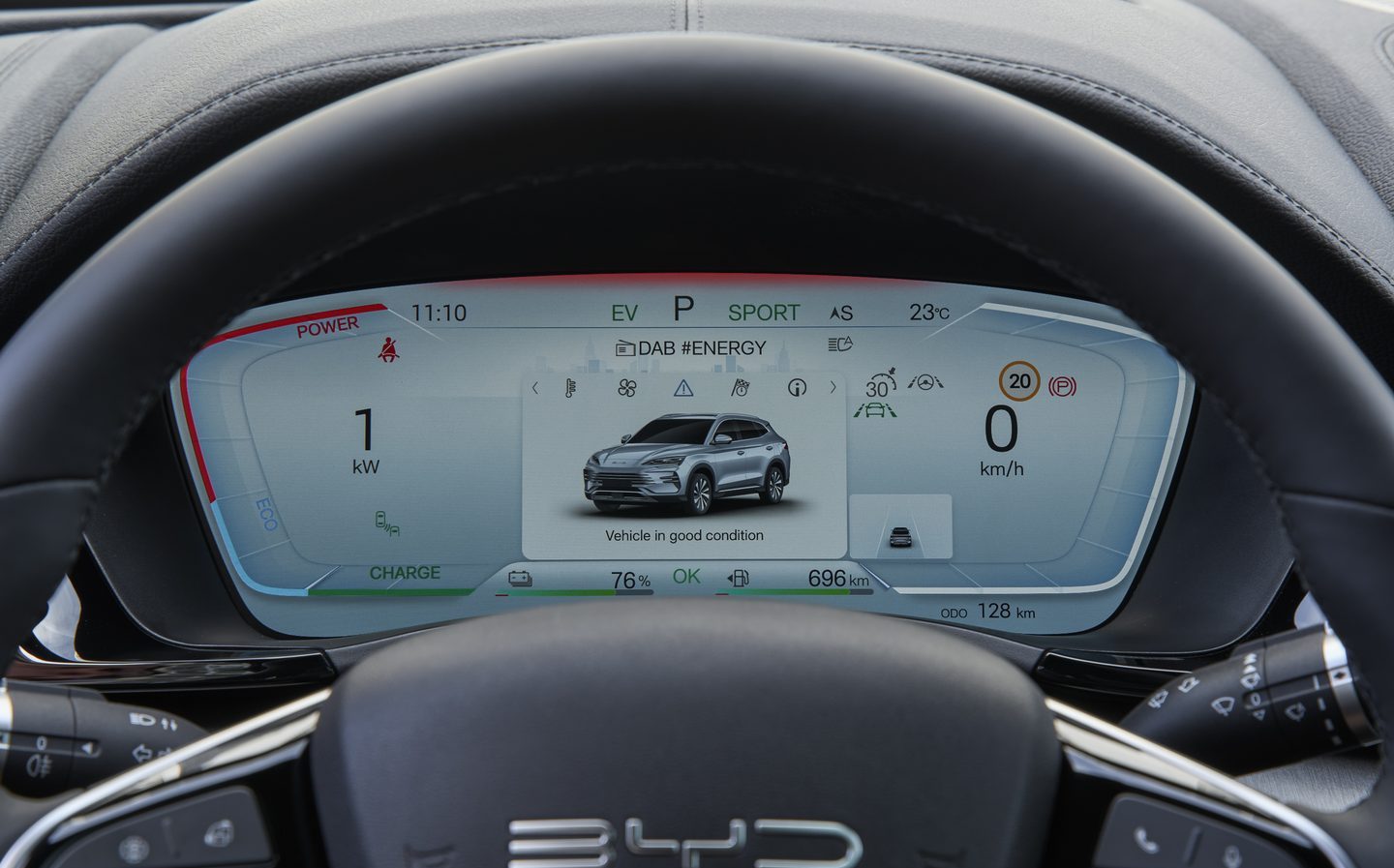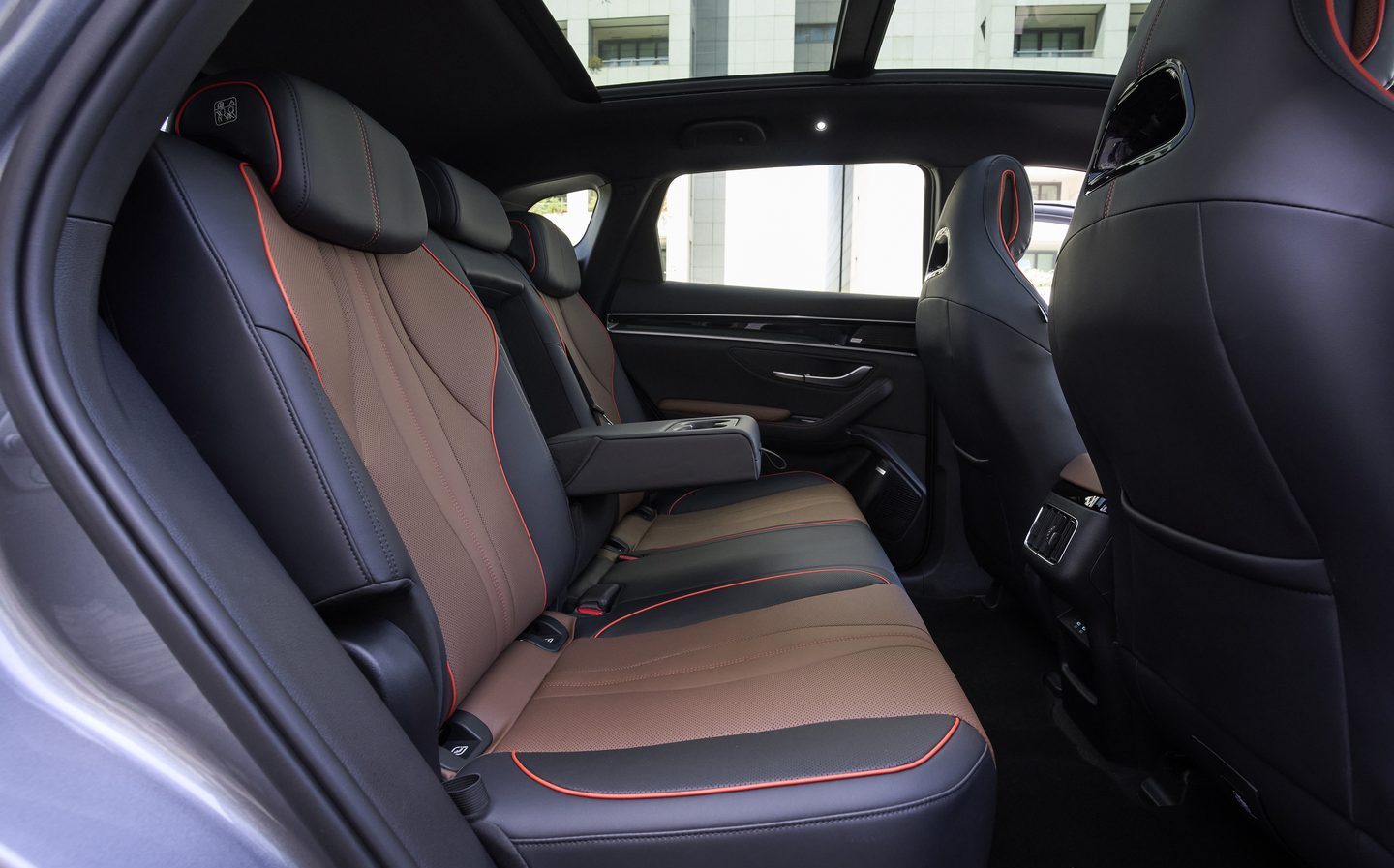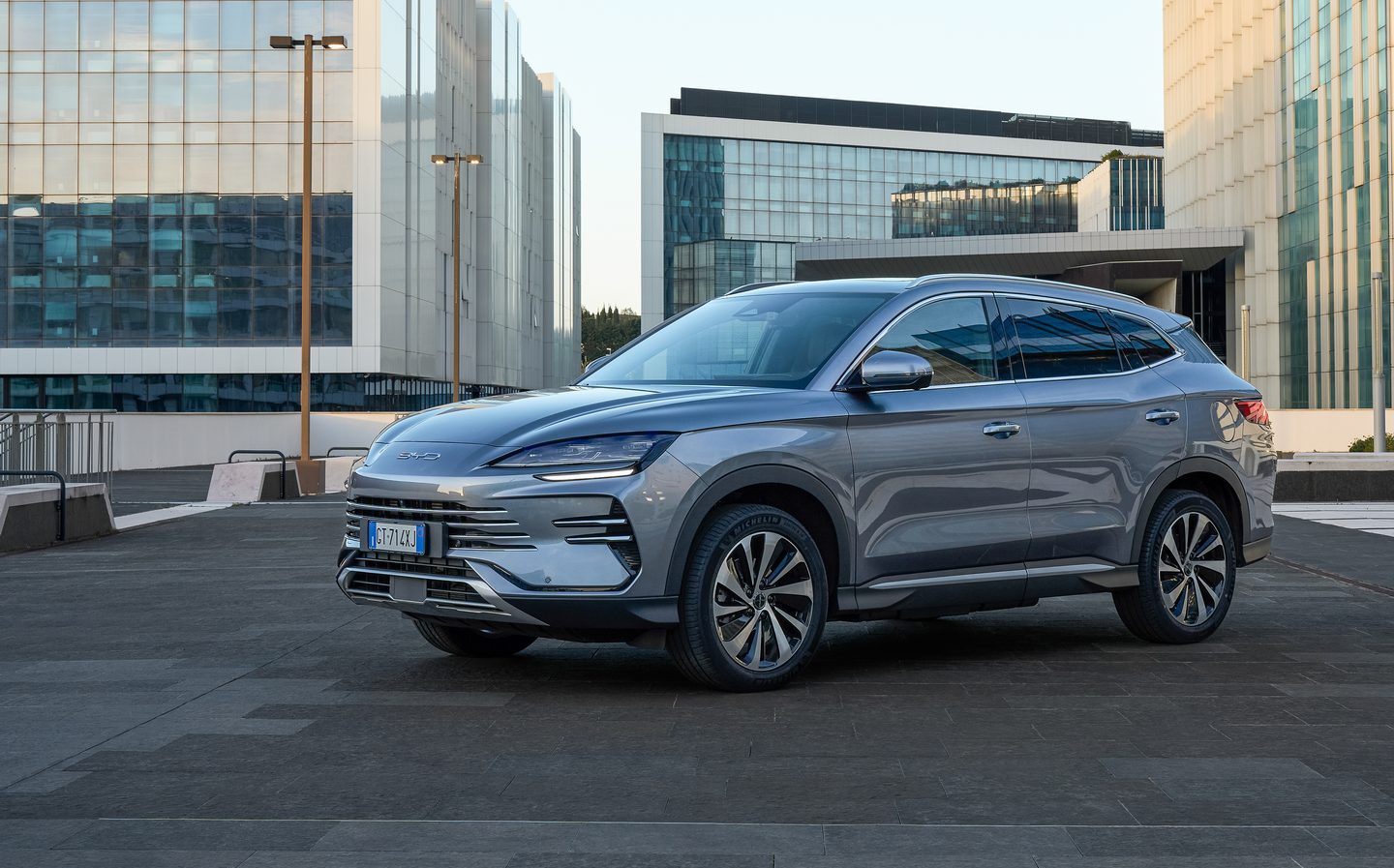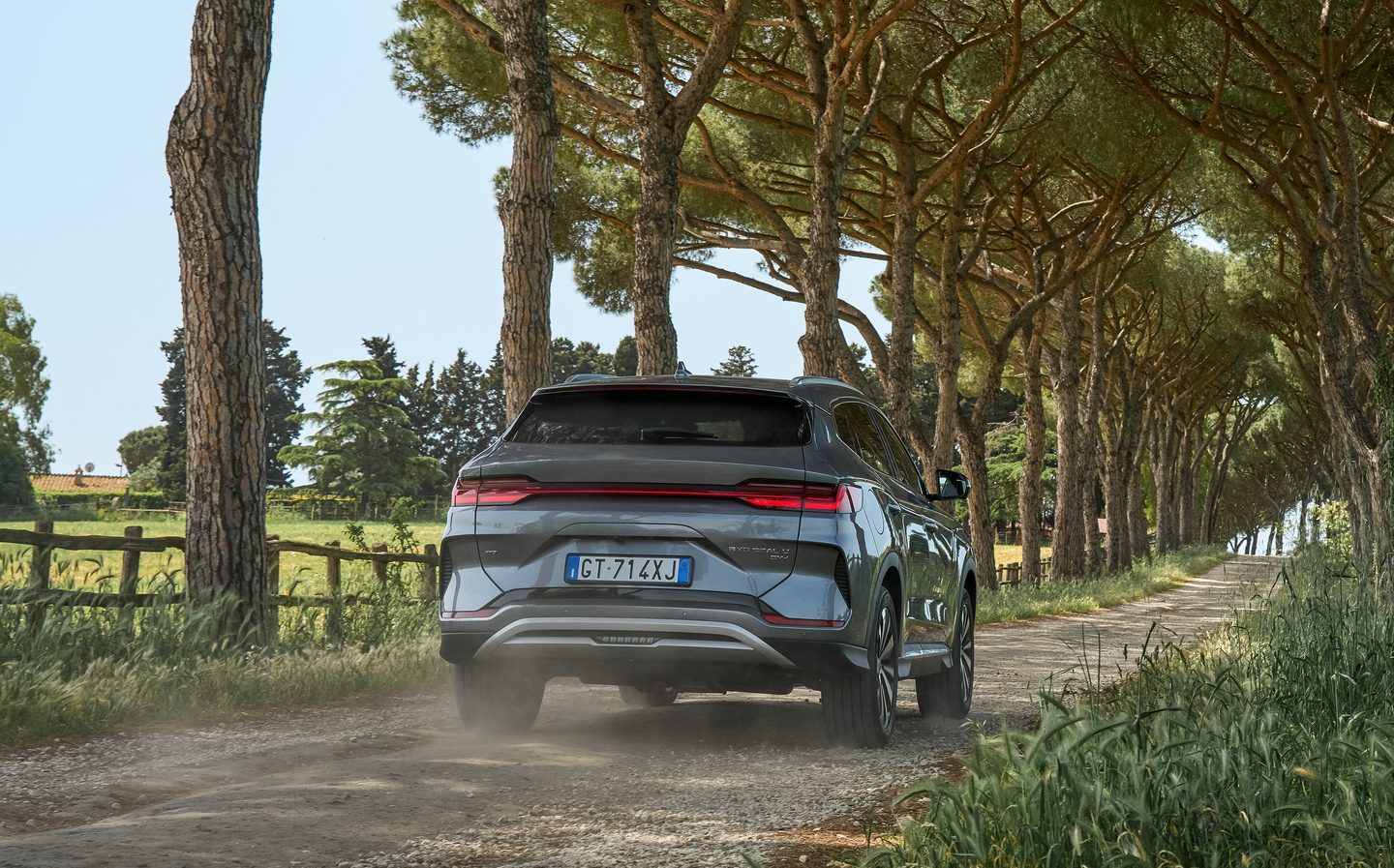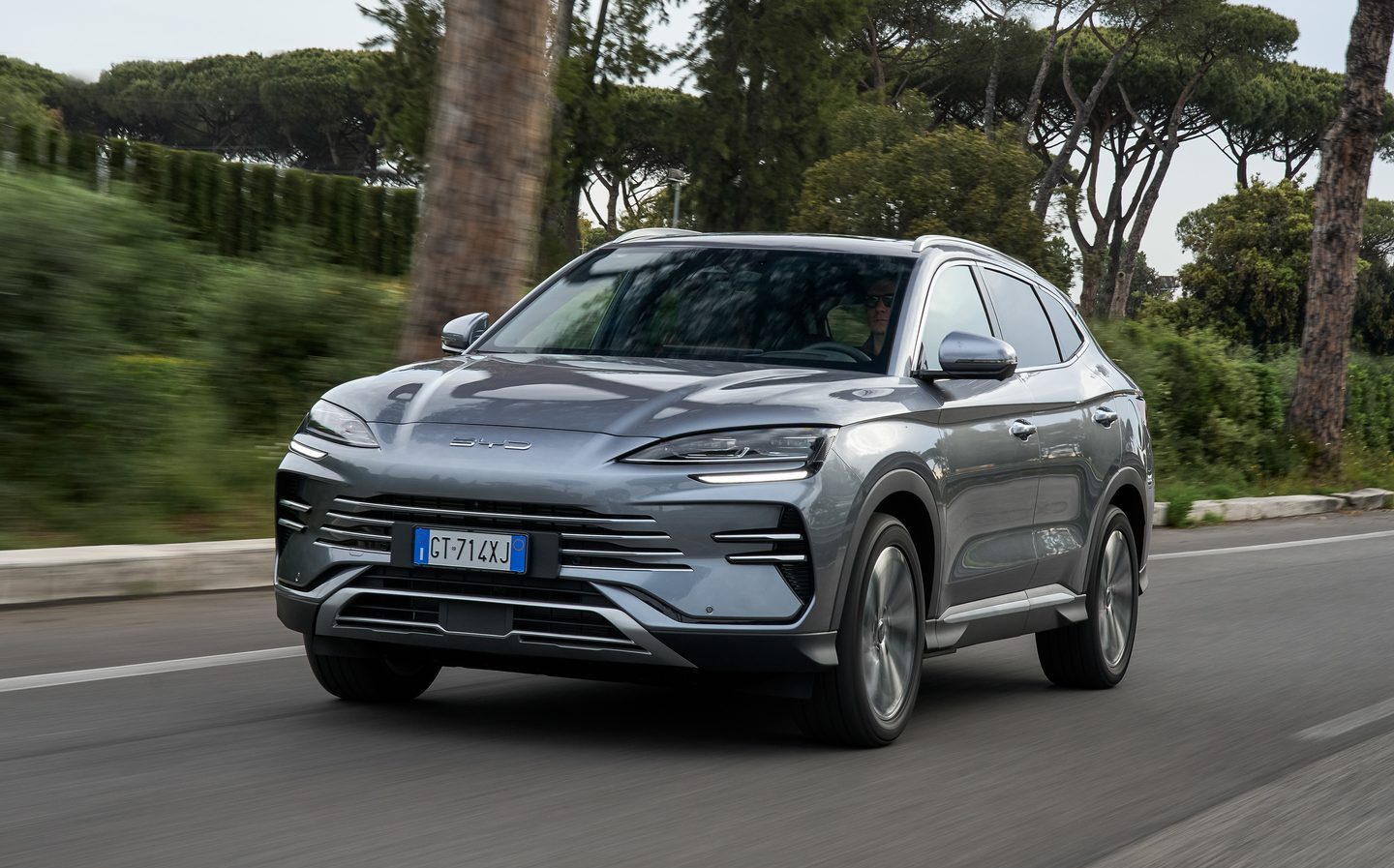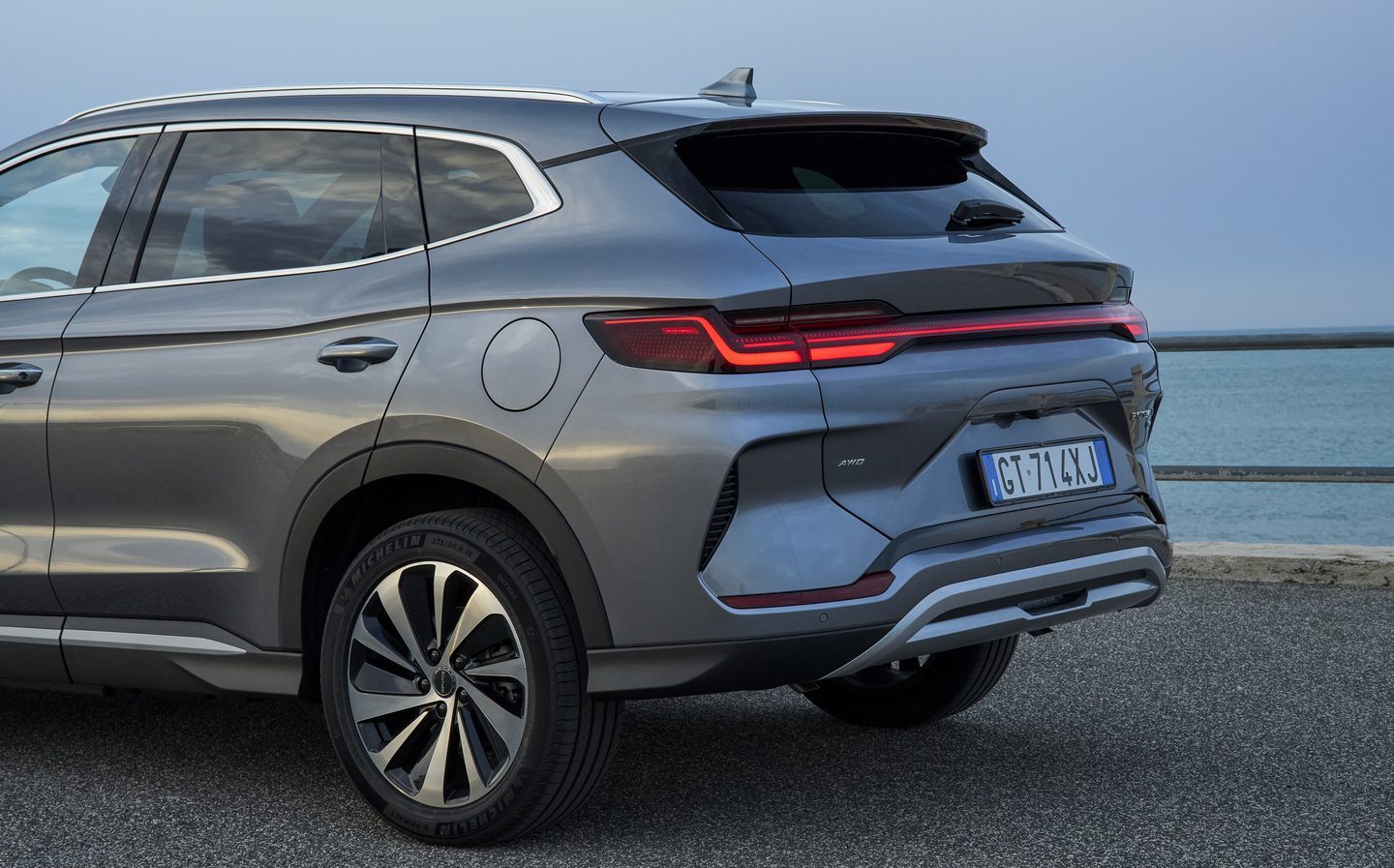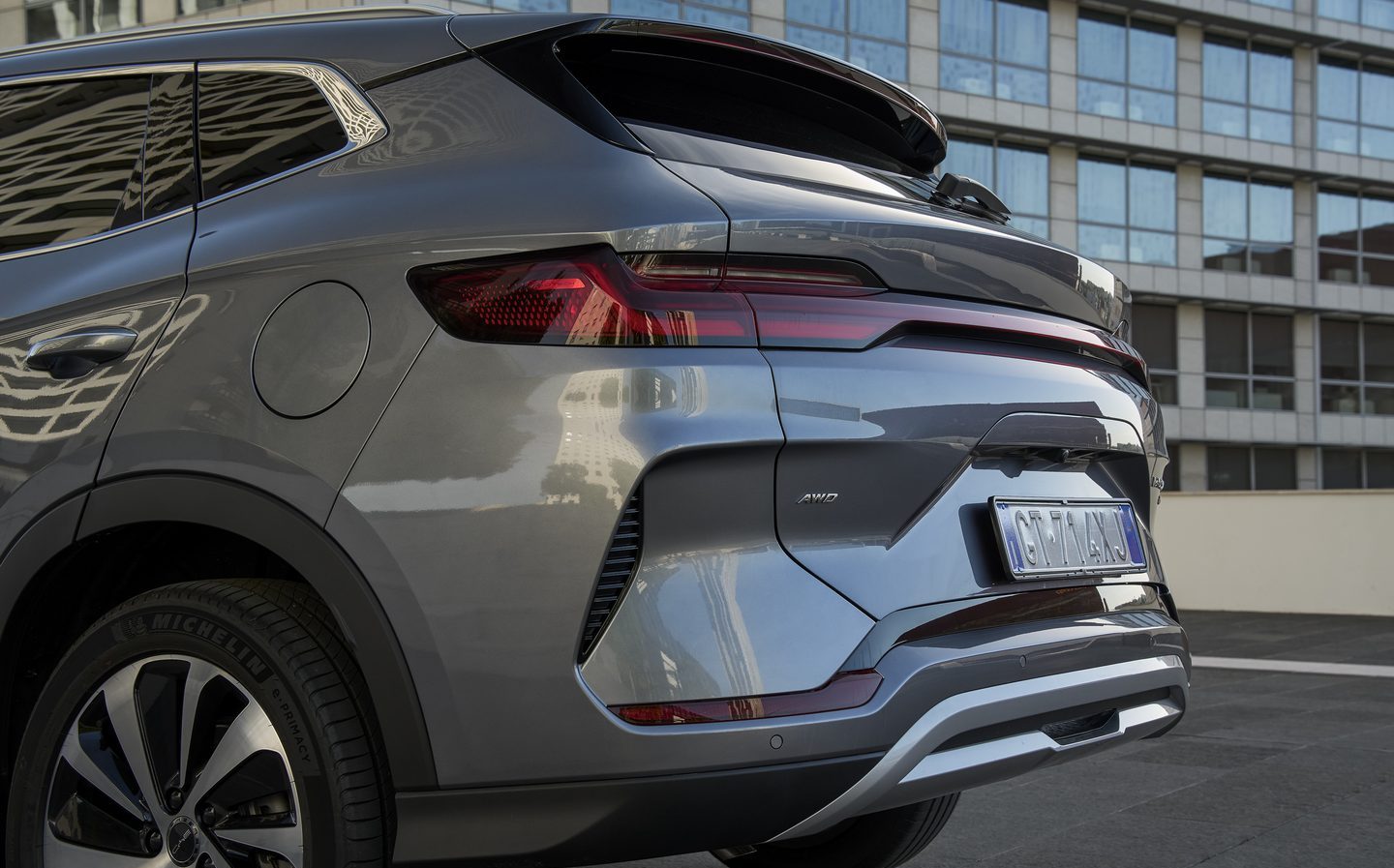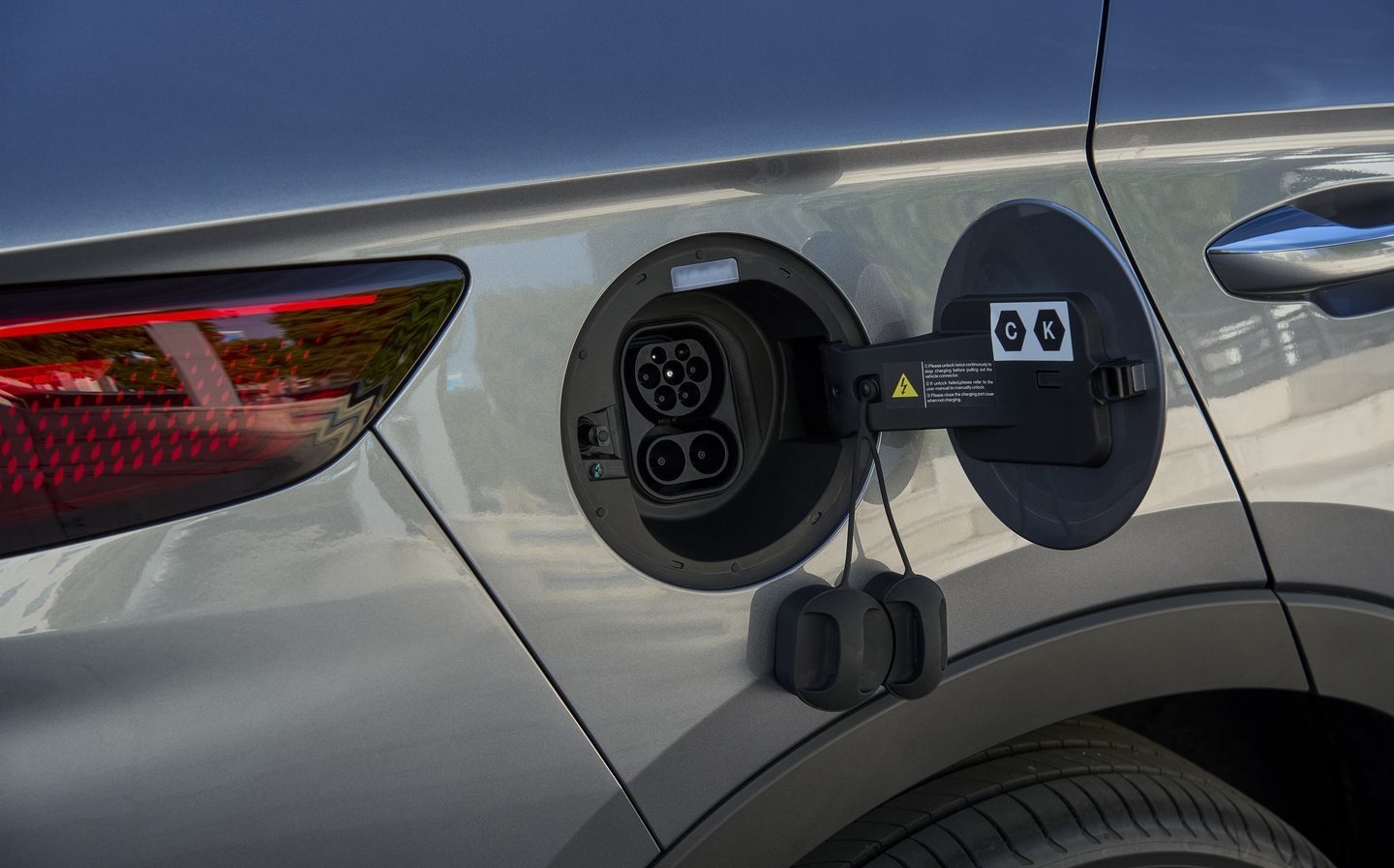BYD Seal U 2024 review: Chinese brand adds plug-in hybrid SUV to its electrified line-up
Literally putting the U in SUV
Until now, BYD’s offerings in the UK were strictly electric vehicles, but the Seal U is set to break that mould as the Chinese brand’s first plug-in hybrid here. This five-seat SUV is diving headfirst into a fiercely competitive market, jostling for attention with heavyweights such as the Ford Kuga, Kia Sportage, Nissan Qashqai, Toyota RAV4 and Volkswagen Tiguan.
The Seal U shares its moniker with BYD’s chic, compact saloon, and the front end has a similar look, particularly around the headlights. However, that’s where the design excitement peters out. As you move along the length of the Seal U, it transitions into a more generic, almost nondescript appearance.
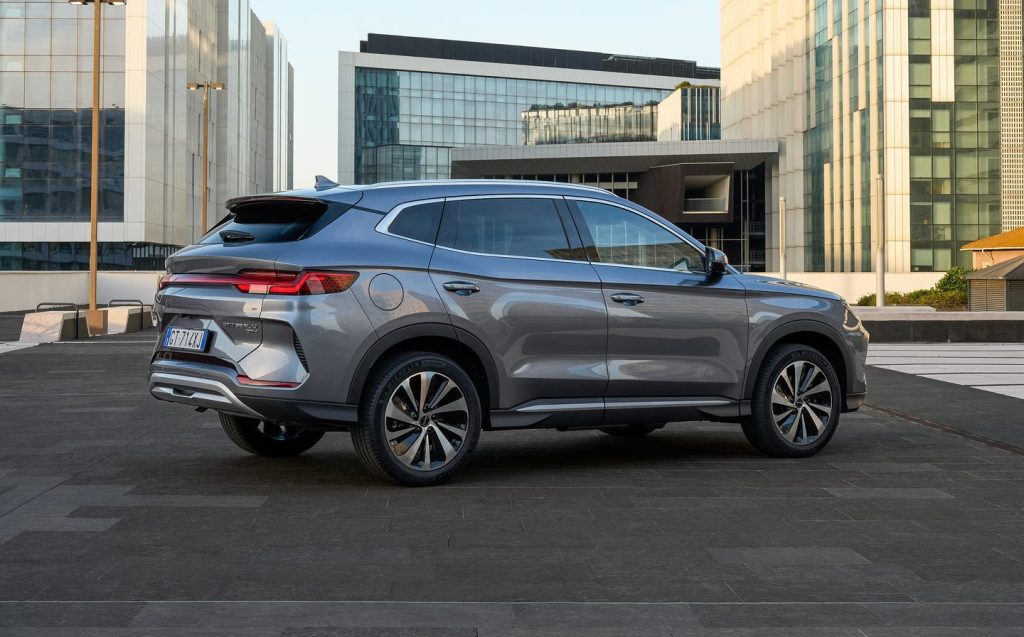
The 19in wheels are well-proportioned to the car and should help avoid exorbitant tyre replacement costs (in comparison to larger rims). A touch of chrome on the door handles, aluminium roof rails and some shiny bits around the windows give a nod to its upmarket ambitions, but it’s not exactly what you’d call a premium design.
Shortly after BYD made its grand entrance in this part of the world, it faced some mockery for emblazoning its full name — Build Your Dreams — across the rear of its cars. The company quickly (quicker than you’d expect from a typical European brand) did a U-turn on this, but perhaps went a bit too far the other way. Instead of the usual central badge on the boot lid, BYD has pushed everything to the bottom corners, leaving an oddly conspicuous blank space in the middle of the full-width light bar at the back.
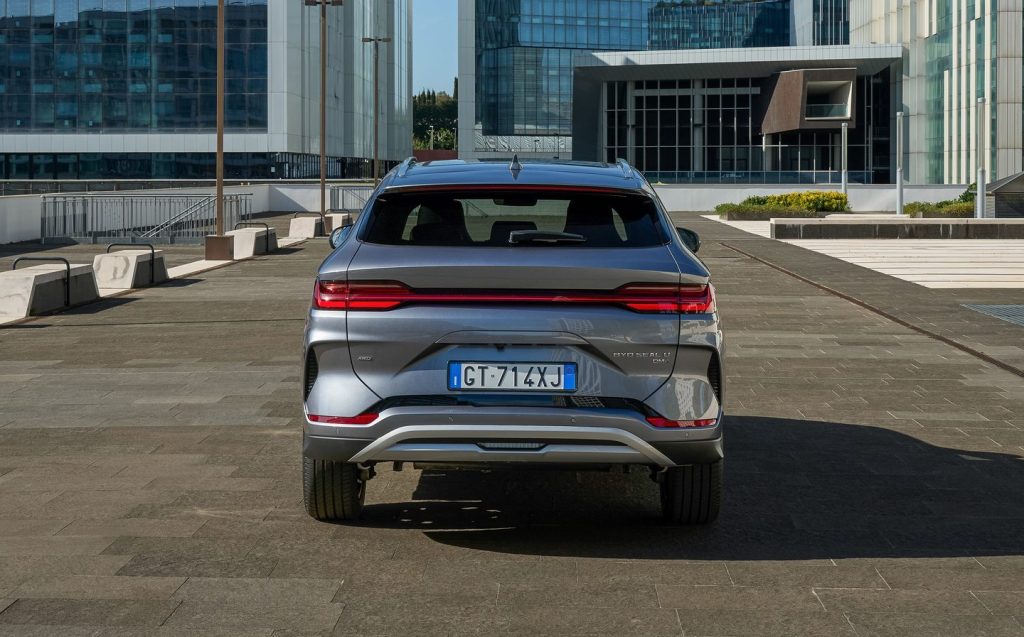
Measuring 4.7m long, the Seal U is quite the stretch for its class, something you’ll really notice when you plonk yourself down in the rear seats. There’s ample legroom to stretch out and a completely flat floor, so even the poor soul in the middle seat won’t feel short-changed.
Headroom does take a bit of a hit due to the full-length glass sunroof, with its necessarily-thicker frame, but the extra light and the airy feel it brings more than make up for it. Rear passengers can tweak the seatback angle to their liking, or if you need more boot space, the 60:40 split seats fold down, expanding the luggage capacity from a respectable 425 litres to a useful 1,440 litres.
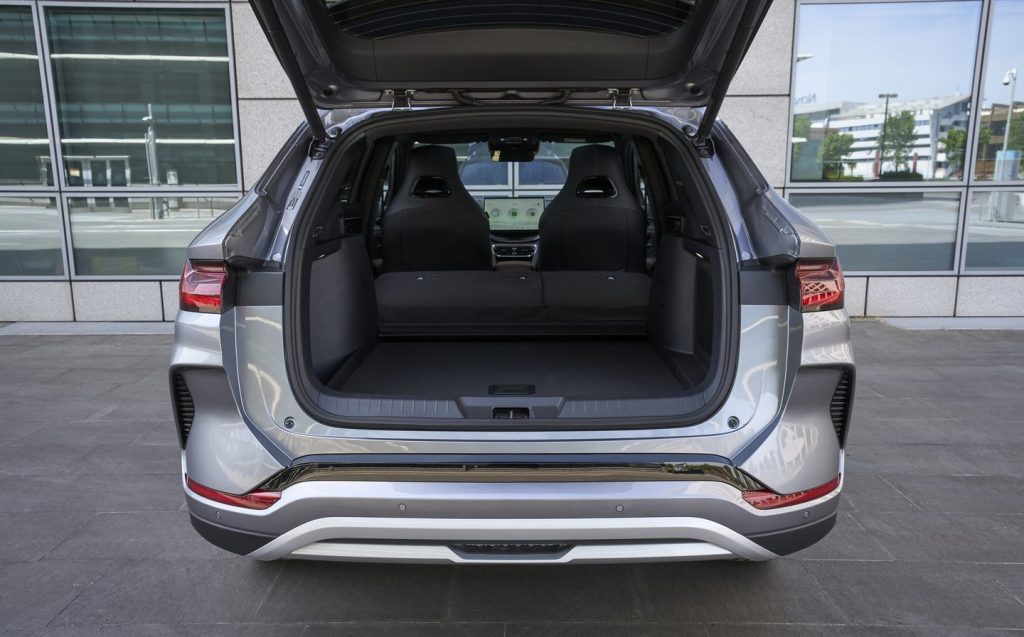
Up front, the driver and passenger are treated to a generous amount of space and a commanding driving position and the slim A-pillars offer a wide field of view with minimal blind spots. The electrically adjustable driver’s seat makes it a breeze to find your perfect driving position, while the manually adjustable heated steering wheel offers a decent range of motion for both reach and rake. To top it off, both front seats come heated and ventilated as standard.
The Seal U comes decked out with a 12.3in digital instrument cluster and a colour head-up display – the kind of feature that’s often an added extra. There’s also a sizeable 15.6in touchscreen with a quirky twist borrowed from BYD’s Dolphin electric hatchback: it can rotate 90 degrees to give you a portrait view, which is particularly handy for using the built-in navigation. It’s a neat party trick but how often people will change its orientation once they’ve found their favourite setting is open for debate.

While BYD’s native infotainment system isn’t the most intuitive around, the screen is highly responsive to inputs, and the graphics are impressively sharp. If you’d rather stick to your favourite smartphone apps, worry not, as the Seal U supports both Android Auto and Apple CarPlay.
Kudos to BYD for starting strong with generous standard equipment. The power options are likely to turn a few heads as well. There are three plug-in hybrid variants from which to choose, offering a mix of front- and all-wheel drive, two battery sizes, and two engine types.
The range starts with the “Boost” version, which we expect to cost from around £34,000 (TBC at the time of publishing), powered by a naturally aspirated 1.5-litre four-cylinder petrol engine running the Atkinson cycle, a 145kW electric motor and an 18.3kWh battery. Its maximum power output from both is 214bhp, and it has an official electric driving range of 49 miles, with a massive (and perhaps optimistic) official total driving range of up to 621 miles when a full tank of petrol is taken into consideration.

Those seeking a longer electric range should opt for the mid-level “Comfort” variant as it retains the same performance but has a larger capacity 26.6kWh battery, increasing range to 77 miles.
All versions of the Seal U come with 11kW AC charging, which is quicker than most typical home chargers can supply, allowing you to make the most of AC public charge points. There’s also 18kW DC fast-charging, though it’s not exactly a speed demon. Recharging the smaller battery from 30- to 80 per cent on DC power takes 35 minutes, while the larger battery needs 55 minutes to reach the same level on a DC unit.
The model we’re driving is the all-wheel-drive “Design”, which benefits from a second electric motor — on the rear axle — and an upgraded petrol engine, courtesy of a turbocharger. With a peak output of 319bhp, it certainly adds a bit of zest.
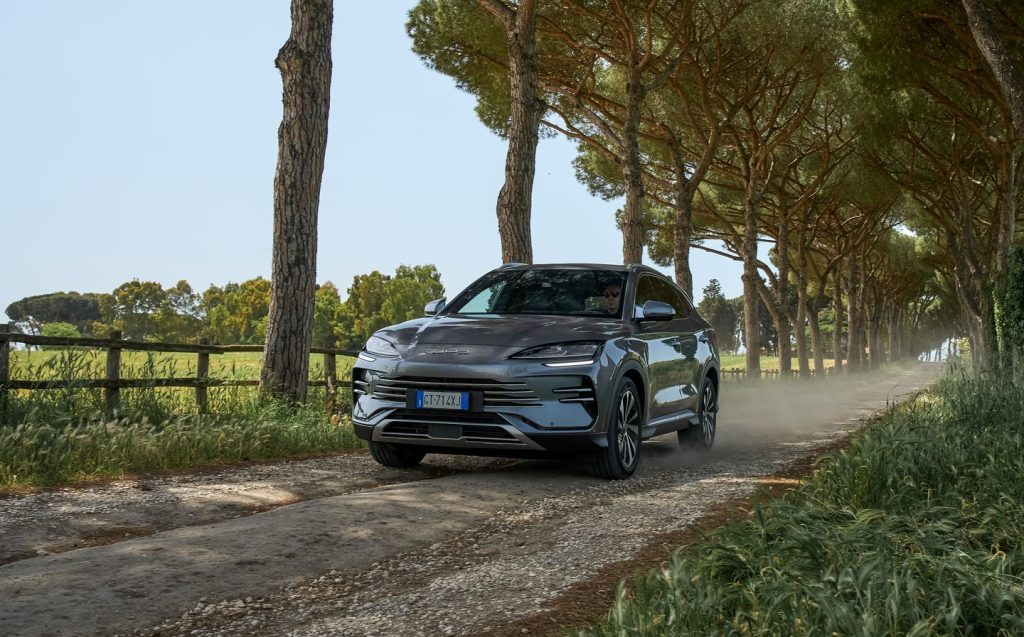
However, this version of the Seal U comes only with the smaller battery. Combined with the extra weight of the second motor, this reduces the electric-only driving range to 43 miles, the shortest of the three versions.
The driver has the option to run the Seal U in EV (electric vehicle) mode, where it uses all the battery’s energy until it’s fully depleted. Alternatively, in the HEV hybrid setting, the car decides how and when to best deploy electric or hybrid.
Driving in electric mode feels just like driving a pure-electric car. The power delivery is smooth and refreshingly gentle. Unlike many electrified cars that offer neck-snapping acceleration, the Seal U focuses more on comfort and refinement.
On a motorway cruise, the car might use the combustion engine to drive the wheels and simultaneously generate power to recharge the battery. If a steep hill comes into play or the driver needs more oomph, the electric motor(s) can kick in. The Seal U seamlessly handles this powertrain juggling act. Whenever you press the accelerator, the power comes smoothly and promptly, without the hesitation you might find in some other hybrids we could mention.

The Seal U has various drive modes that influence power delivery. This four-wheel-drive model additionally features modes for snow, mud and sand. While these settings don’t change the steering, drivers can switch to a firmer set-up for that via the car’s menu. We found the standard steering a bit too light, lacking feedback, and yet the firmer setting felt artificially heavy. Since the Seal U isn’t aiming to be a performance SUV, many drivers will find the normal setting perfectly adequate and may seldom change it.
Oddly, the Seal U’s suspension can sometimes feel a bit too soft. It handles harsh bumps effortlessly, but there’s too much boinging around afterwards, suggesting the dampers could do with being beefed up. On rougher roads you find yourself travelling along with a gentle, springy bounce.
Nonetheless, with plenty of tyre sidewall and laminated glass throughout, the BYD’s cabin remains pleasantly quiet while driving. In fact, it can be hard to tell when the combustion engine has kicked in.
Plug-in hybrids often struggle when they have to function as regular hybrids, as hauling around extra hardware can be inefficient once the battery is depleted. The all-wheel-drive Seal U weighs 2,100kg but still manages to be fairly economical on petrol even in hybrid mode. During a mixed 80-mile journey, it achieved nearly 50mpg, which is quite respectable.
To get anywhere near the official economy figure of 235mpg, though, you’ll need to make sure the battery is charged before every journey via the plug — long motorway runs ruin that wildly optimistic figure.
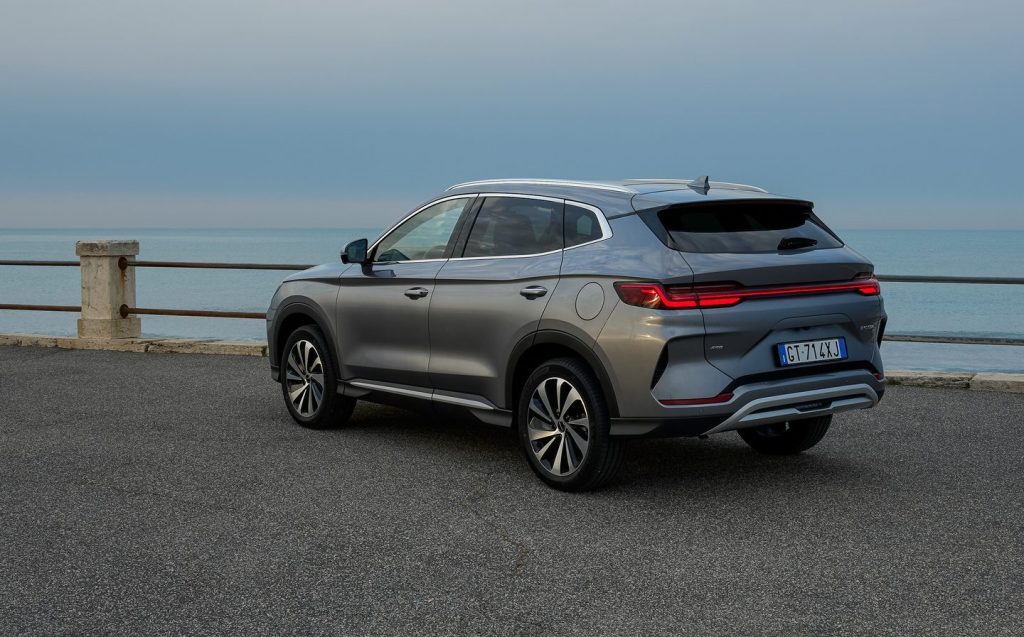
The BYD Seal U might not be the sharpest handler in its crowded SUV category, but razor-sharp handling isn’t really the top priority for buyers in this segment. So if you’re you’re after comfort, quietness, high levels of equipment and low running costs, and are happy buying Chinese, then the Seal U could be just what U R looking for.
Chinese carmakers
BYD Auto is a Chinese carmaker owned by BYD Company, a privately-owned manufacturing firm that specialises in batteries, with headquarters in Shenzhen, China.
Related articles
- If you found our review of the BYD Seal U interesting, you may want to read our review of the BYD Seal, too
- Or check out the best-selling new cars of 2024 in the UK
- Here’s what Will Dron had to say about the BYD Dolphin
Latest articles
- Should I buy a diesel car in 2025?
- F1 2025 calendar and race reports: The new Formula One season as it happens
- Zeekr 7X AWD 2025 review: A fast, spacious and high tech premium SUV — but someone call the chassis chief
- Denza Z9GT 2025 review: Flawed but sleek 1,062bhp shooting brake from BYD’s luxury arm
- Extended test: 2024 Renault Scenic E-Tech review
- Best-selling cars 2025: The UK’s ten most popular models of the year so far
- Audi A6 Avant 2025 review: Trusty executive estate ticks expected boxes, and there’s still a diesel option
- Keir Starmer eases pressure on carmakers to sell EVs in response to ‘global economic headwinds’
- Ferrari 12Cilindri Spider review: Heady blend of traditional and futuristic becomes even more intoxicating after lid is removed


